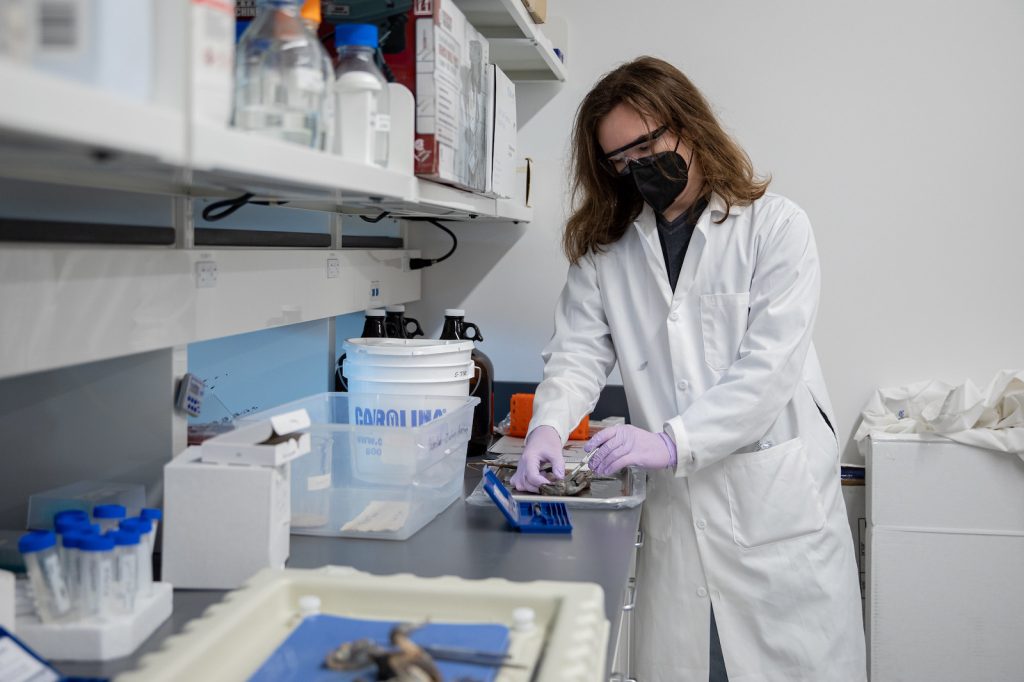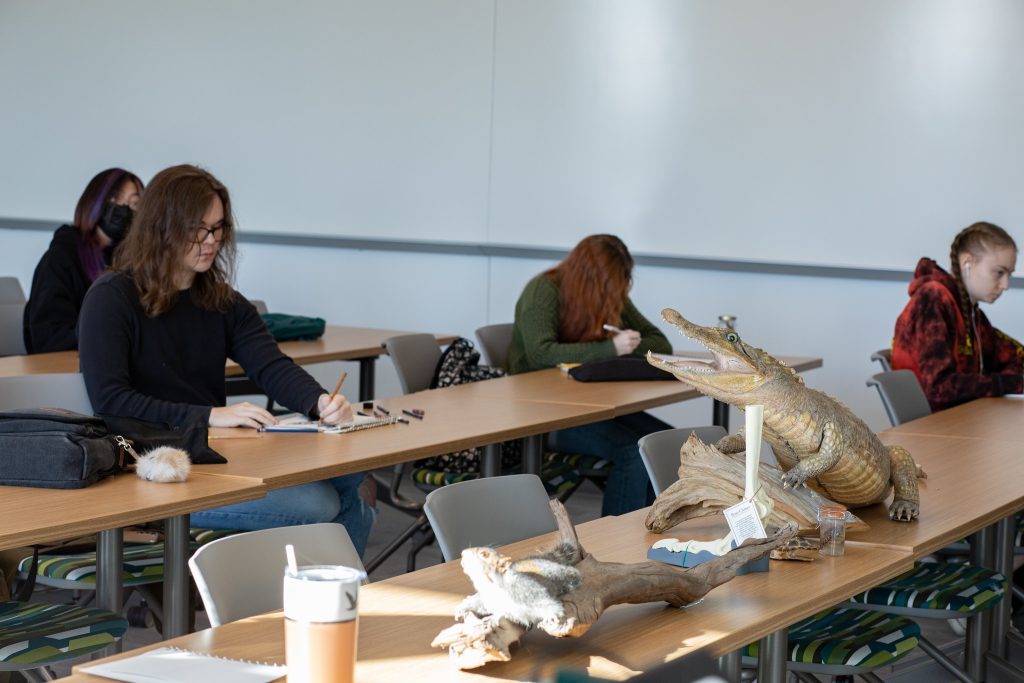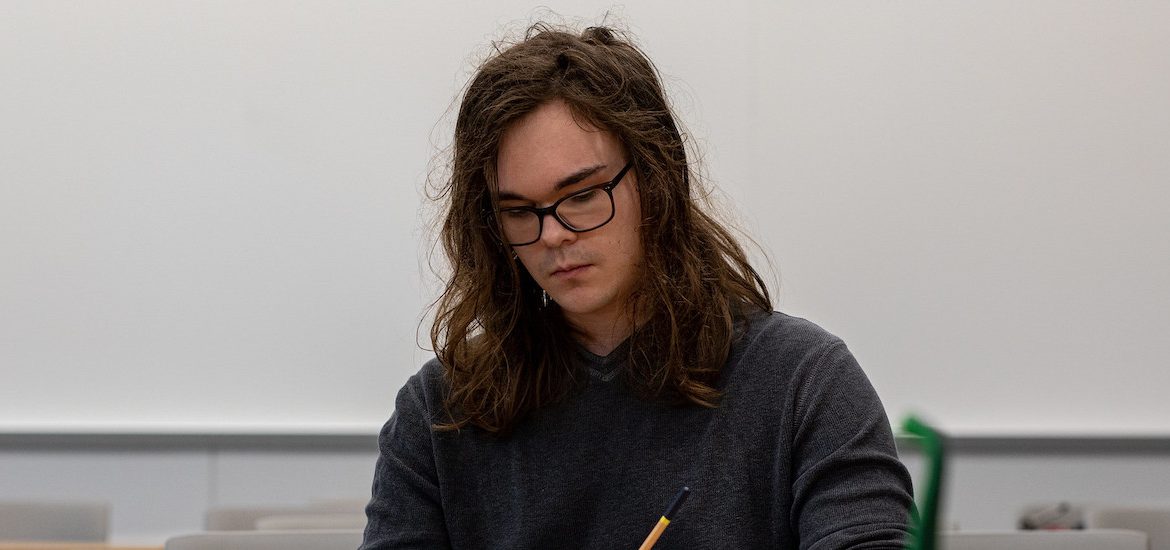Thomas Block, a rising senior radio TV film major, talks about his experiences in paleoart and the unique combination of concepts and experiences that the field entails.
This past semester Thomas took the geology lab science class Breathing Life Into Fossils: The Science of Paleoart (GEOL 01.313). While it may seem surprising that a student focusing on radio, television and film would take a class about fossils and their artistic significance, Thomas has had a longtime interest in that area of learning.
Thomas says that his history with Rowan and his love for paleontology goes a lot farther back than one may think. “I actually wanted to be a paleontologist when I was younger. I remember coming to Rowan once with my dad and someone working here asked what I wanted to do and if I plan on going to Rowan. I said I want to be a paleontologist. And they said, ‘Oh, I’m not sure that we have a paleontology program here.’ A decade later, they absolutely did. And it’s huge. Not only that, they have a paleoart certificate that I started to take because I’ve just always had an interest in paleoart. It just felt like a rare opportunity. There’s not many paleoart classes anywhere at any university, let alone a whole paleoart certificate.”

Thomas emphasizes the strong connection between art and science, especially in his field: “I think that’s really the heart of this class; it’s the science behind the art. Even just outside of a paleontology perspective, outside of paleoart. Art is scientific, and I think being able to really lean into that is really helping me with my skills.”
Thomas acknowledges that while many may be surprised to see an RTF major in a paleoart class, he recommends it for just about anyone due to its value in several different areas. He says, “I think it’s kind of an overlooked class because I think it’s really useful for all types of people. Art majors, anybody in any science, paleoart is just interesting in that way. It’s a science, but it’s an art. It’s the intersection of a lot of different things. There’s art majors in that class. Again, I’m a film major. I know there’s some geology majors there too. I honestly think a lot more people should take it because a lot of people can get a lot of different things out of it.”

He also says that despite seeming like a niche field, there are plenty of opportunities and career potential for paleoartists in many different fields: “It’s just a cultural phenomenon that’s never going to go away. Paleoart has been popular for 130 to 140 years or more, people are just into dinosaurs and that’s never going to stop. So you can sculpt toys because that’s a job somebody needs to do. You can illustrate children’s books. You can animate for film and television, and it’s becoming more and more common that for scientific publications, they want art to go along with it because it gets people interested. So paleoartists are getting work in the actual science aspect of it too.”
He encourages his fellow Profs to explore their interests and that you may just be surprised what kinds of opportunities they could lead you to.
Like what you see?
Story by Connor Bicknell, senior communication studies major



